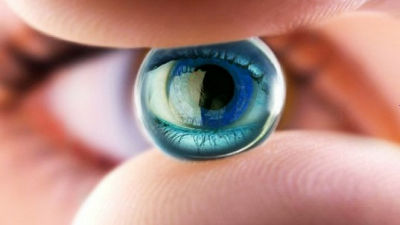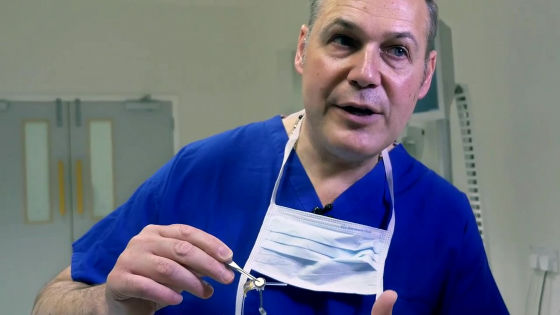Successfully transplanted artificial retinal device for the first time in the world to patients with age-related loss of vision

A device that visualizes the image of the outside world through artificial retina to a person whose visual acuity drops significantly or blindness "Argus II"Occurs with aging"Age-related macular degeneration"It was transplanted to a patient who lost sight, and succeeded for the first time in the world to regain eyesight.
Bionic eye implant world first - BBC News
http://www.bbc.com/news/health-33571412
You can understand what kind of device is the artificial retina device "Argus II" with one shot by looking at the following article.
US Food and Drug Administration approves artificial retina device "Argus II" to support vision of persons with blindness and low vision extremes - GIGAZINE

80-year-old Raymond Flynn suffered from dry age-related macular degeneration, maintaining peripheral vision, but the center vision completely disappeared, and it hindered daily life. So, in order to regain sight, Ms. Flynn participated in an advanced program at the Royal Ophthalmology Hospital in Manchester and decided to undergo surgery to transplant the artificial retina device Argus II.
It is a disease that gradually narrows the field of view so farRetinitis pigmentosaAlthough Argus II has been transplanted to patients with the disease, it was the first transplant to age-related macular degeneration.
Surgery was performed jointly by a professor at the University of Manchester and the Royal Ophthalmology Hospital in Manchester for 4 hours and it was a wonderful success. The appearance of Mr. Flynn after surgery can be checked with the following movie.
Argus II - Retinal Implant - Bionic Eye - Retinal Prosthesis System - YouTube
Mr. Flyn who gets a doctor's examination. I found that central vision was completely lost.

Transplant surgery of Argus II finally. Commemorative photo with medical team before surgery.

Paul Stampa professor who operates surgery. Argus II's unit to transplant is holding it.

This is the Argus II unit, the part where the round device pinched with tweezers processes the image.

The artificial retina is placed on the nail.

Mr. Flynn two weeks after surgery was finished safely. I am replying while looking at the pattern (pattern) made with the dots shown on the screen.

"This time it was level," Mr. Flyn said. Professor Stanga says, "It is wonderful, perfect."

The shape like sunglasses is Argus II worn by Mr. Flynn and the images taken with the camera attached to it are sent to the unit that has been transplanted to the retina so that you can recognize what is in front of you How it works.

"I will go back to Mr. Flynn in the future, let's make adjustments," Professor Stanga said.

In this way Mr. Flin succeeded in regaining sight.

"Looking for the best setting that makes it look better is the future task," stamma said.

Argus II said that it is still not possible to convey detailed images. However, in the past, he succeeded in detecting different patterns such as the shape of the door, and he seems to have been used as an auxiliary tool for the life of patients who recovered their sight. Professor Stanga has confirmed that as early research it has been found that certain effects have been observed in recovery of vision although Argus II transplant has succeeded with age-related macular degeneration and there are simple pattern recognition in many industrialized countries I think that it is meaningful and expects to develop technology to alleviate the symptoms of vision loss which anyone can cause due to aging by collaborating with Ms. Flyn in the future is.
Related Posts:







